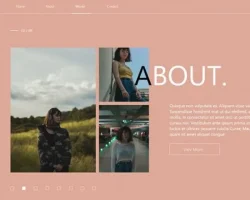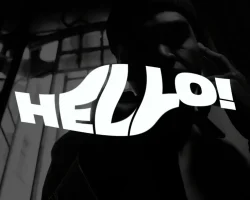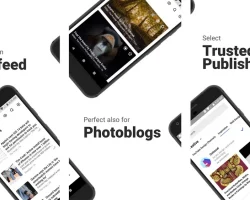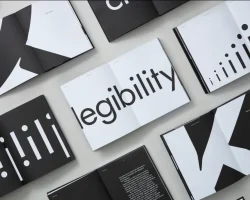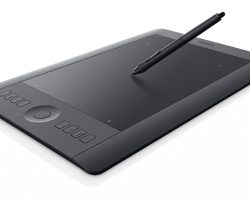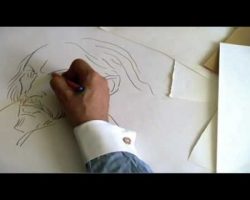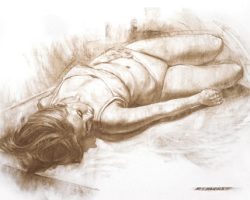The Artwork of Lacy Chenault – from Heart people to Belly Dancers
I Believe I have always been an artist – from a very young age I remember having a huge interest in drawing things – but it’s always been one thing – Women – which started as heart people and evolved to women.
Through High School I got bad grades in everything but art class, even if I skipped a week of school I would always finish my art projects on time, and sometimes do other people’s projects as well. But I feel like my art is at its peak right now – though I secretly hope it isn’t – I would like this to just be the beginning of a mountain rather than it being all downhill from here.
A few years ago – right around the time I moved in with Mark I started to really pick it up again, and since then I have gotten much better. I started my very own website and found the people who really like my art. At least I think they do?
I think the biggest thing for me is when I just recently signed a contract – I will be receiving 12% royalties from a company selling my artwork on cross-stitch patterns, and sales at my cafepress shop seem to have taken off. I am not one to usually have an ego about things, but at the very least at this point I can say I am proud of myself.
I can look at my art now and really see that I have gotten better – sure it has taken years and many drawings have been thrown in the trash, but after all that it has actually gotten better…wow.
Earlier this year I had my first “Art Show” at a local coffee house – my art was up for one entire month. MY ART was the sole décor for this coffee house for all of the month of February – sure when it happened, I didn’t think I deserved it, but looking back – I did. I loved that people could see my art up close and personal – not only on the web – my scanner never does them justice anyway. It was really nice to see that people really did like my art – lets be truthful here – a lot of people lie on the internet, I can’t read their expressions when seeing my art, so I never really know what they think of it – that is of course, unless they buy it.
It started as just Fairies here and there, some Goddesses – then it grew to include the Zodiac collection, and just recently I started Drawing Belly Dancers, as I myself am now one – it has inspired me in so many ways with my art.
I draw dancers from my class whether they know it is them or now – they are at the very least my inspiration – I have drawn my teacher twice and I think she likes them. I take tons of pictures at every show – just to take them home at get ideas for my next drawing.
It is really ever evolving – you put the effort it and you will see results – it may take years – but it is always about patients – with anything you want to get good at.
Giovanni Civardi – Drawing the Female Nude
Lots of different poses, real looking women
For many years I have been drawing women, and only women. The female figure I think is just nicer to look at.
The problem I would always run into when starting a drawing is thinking of a pose, and actually pulling it off. That is why I purchased “Drawing the Female Nude” at my local Barnes and Noble. The only other option I could think of was to hire an actual model, and that’s just too expensive and awkward.
Drawing the Female Nude is written (and illustrated) by Giovanni Civardi, an Italian artist and instructor who also wrote and illustrated “Drawing Human Anatomy” and “Drawing the Male Nude”. His drawings are as realistic as they come, which is how I like it.
In this book he uses two models, one that is tall and has more boyish figure and one who is a bit womanlier in the hips and butt. Both of them are definitely European, you can tell by the furry armpits, which you can “edit out” in your own drawings easily, but it really doesn’t detract from the book at all unless you are tremendously shallow. That is also part of the reason I really like this book.
The women in this book look like real women. Their breasts are not super-round and perfect, their brows are not perfectly plucked, and they do not have washboard abs. I am not saying they are fat (I am probably bigger than them), they are real.
These two women are drawn in many different poses including standing, sitting, stretching, twisting, turning, lying, and even some yoga positions from just about every different angle. Each pose includes his own tips on pulling it off, and information on different techniques and materials. He uses charcoal and pencil to sketch out the women. There are also a few actual photographs of the models in this book.
I really like his tips on shading and shaping the muscles. He really teaches you a lot about the female muscular structure in this book too, which is something every artist should study a bit about to reach his or her full potential. He encourages every artist to find his or her own unique style, not just to copy.
This book was definitely worth the $14.95 I paid over three years ago. I still use this book as a reference, and I do feel that it has made me an improved artist. This book I think would be an excellent gift for all artists who like to draw real looking women, whether amature or professional
The Nude Figure – a visual reference for the artist
I know you will find what you want in this book. It is full of good poses, which are lit very well.
I browsed through this book at a Barnes & Nobles a few weeks ago, and almost immediately fell in love with it. But I did have to wait to go online as it was nearly 30.00 at B&N and I knew I could get it cheaper at amazon.com, which I did for a mere 22.00 with shipping.
Before “The Nude Figure” my best reference book was “Drawing the Female Nude” by Giovanni Civardi, which featured his drawings of two models in various poses. It is a great book for the beginner, but after five years of using it I needed something new – and Playboy just wasn’t working.
The Nude Figure by Mark Smith featured only photographs of various models and all kinds of different poses. All of the photographs are in black and white which is a definite plus in my mind, helping you to see the defining lines and edges. The poses are divided into chapters as follows:
Standing Poses – This chapter is full of your basic standing poses. Arms up, arms down, from the side, from the back.
Reclining Poses – All kinds of laying down positions, all from different perspectives. Some look quite easy to draw and others are quite hard.
The Figure on a stool – These I find quite difficult simply because of the stools – I am not good at any kind of still life, even if it has a woman sitting on it.
Bending Poses – Most of these look like stretching before a workout poses. I don’t se how they could be useful in a work, but for practice everything is good.
The Figure in motion – I am very happy with this section as I do a lot of fairies and it is full of people jumping up in the air – something you could never get a live model to hold.
The Pregnant Figure – There are only a few pages of this, and I’m glad they put in here. It’s not too often that you get to see a nude pregnant woman to draw from. I think this will come in handy someday.
Unusual Poses – Just like it sounds, many of these aren’t very practical, but very useful in learning how different muscles shift in different positions.
The bulk of the photo’s are in Standing, Seated, and reclining poses. Those fill up most of this book.
Also the people in this book are all pretty fit. There aren’t any fat people in here, not a big scope of different shapes. Again, I am happy with this as I don’t want to draw fat people, but other artist might be disappointed by this lack of diversity. Some of the women have hairy armpits though, and some don’t – that’s diverse enough for me.
Take More Risks – Dynamic Figure Drawing
I highly recommend this book for any artist who just wants to tweak what they already know.
The moment I browsed through this book I knew it could help me tremendously. Dynamic Figure Drawing is a book for the already knowledgeable artist, wanting to better understand the human anatomy – something very important in drawing the figure.
I would start out with a book such as “Drawing the Female (or male) nude” by Giovanni Civardi, which only has poses of women or men, and Giovanni is much easier to read, easier to understand as a beginner.
What I found most helpful is the artist examples drawings; he shows different ways of looking at the figure to get a good realistic drawing of it. I have found that breaking the body down into simple shapes makes it so much easier to put it all together, adding muscle structures and curves after. He also breaks down the perspective drawings quite nicely,
There aren’t many full poses in this book as he beaks most down to the parts. He has sections on feet, legs, arms, chests, etc. My hands have gotten so much better since practicing them with this book. But I definitely recommend using another book or source for getting you poses, then using this book for the parts you have a hard time with. I recommend “The Figure Nude”, which is full of photographs of both men and women nude in all sorts of poses. If not, a magazine is always a good alternative.
This book is in no way easy reading, in fact it seems like it should be in college art classes all over the place. It is very technical, and I usually have to read over the same section a few times to really get what he is trying to say. So, again, I don’t recommend this book for beginners at all.
For the figure drawing artist who’s been at it for a while, and just has a hard time with certain parts, or has a hard time putting more action into their poses, I can’t say enough good about this book. It has helped me out in so many ways in just the short time I have had it. You can see it in my most recent works (some are featured on my profile) such as Gaia – I would have never tried such a difficult pose before reading this book. I also am not afraid to show hands anymore, because he has made them so much simpler.
I have truly been inspired by this book, since getting it I have been much more creative with my art, and I take more risks. I am very pleased with what this book has done for me.
Jobs in the art field
get serious about your passion
Artist
BSM – Phoenix, AZ
Designer About our company: Our company is one of the leading export companies in China. Our products range from giftware, toys, houseware, hardware, party… …
Graphic Artist
Sodexo – Altamonte Springs, FL
is seeking Graphic Artists for layout, design and… design artwork for proposal and presentation production for new sales and retention. The graphic artist… …
Graphic Artist
L-3 Communications – Atlanta, GA
Graphic Artist – Requisition ID 050503 USA… Solutions – STRATIS The Graphic Artist creates graphic designs, artwork, and documentation layout, for… …
Deals on not so new books
Soometimes it’s a good idea to go the cheap route
I know there are many starving artists out there as well (myself included) but art lesson/reference books aren’t the kind you want to just borrow from the library, it is a good idea to have them in your collection. Sometimes I open up my old books I haven’t looked at in years and it’s like I’ve never looked through them before – turn old inspiration into new – eBay is a good place to get good – and cheap art reference books.

